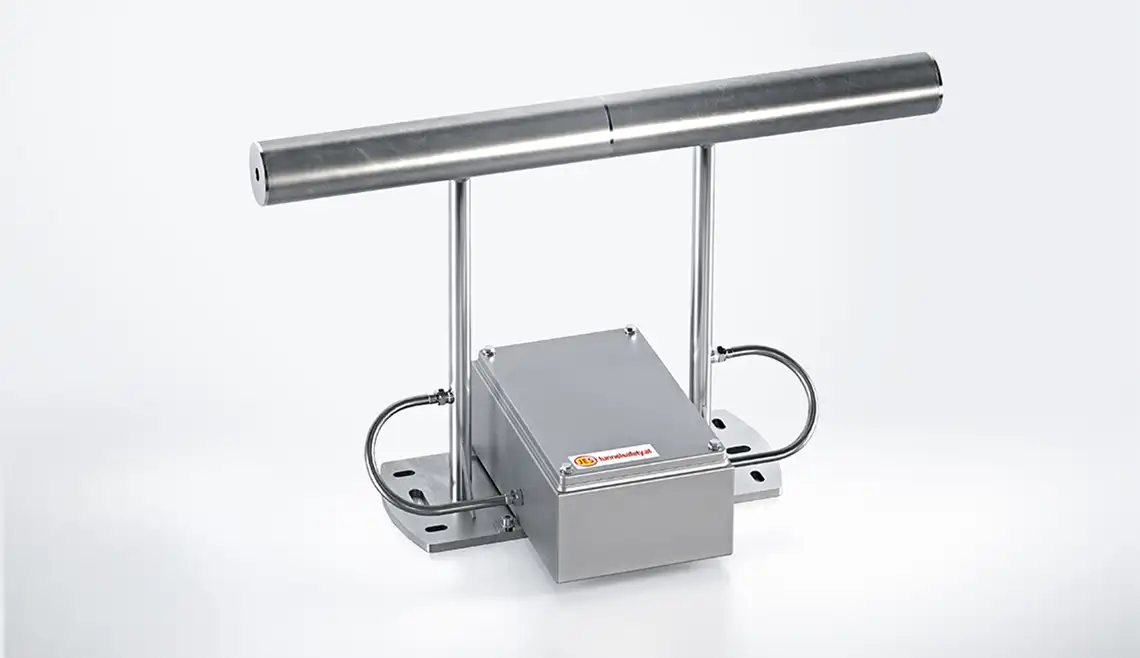
Air flow monitoring
Air flow monitoring is used to control the ventilation of a tunnel during normal operation and in particular in the event of an incident, when an exact determination of the air flow is necessary to keep the escape routes smoke-free to allow tunnel users to rescue themselves.
JES ELEKTROTECHNIK, a DURAG GROUP company, offers systems in this area with two different measuring methods: the ultrasonic transit time difference method and the differential pressure method.
Measuring devices using the ultrasonic transit time difference method exchange ultrasonic pulses in two opposite directions, whereby a vectorial component of the air flow coincides with the direction of sound propagation. Based on the difference in the transit times of the ultrasonic pulses in the two directions, air velocity, direction of flow and air temperature are calculated.
Measuring devices using the transit time difference method are available for measuring the air flow at only one point (point measurement) or over the entire tunnel cross section (cross section measurement). Only the cross section measurement provides a reliable measurement result for the air velocity over the entire tunnel cross section.
For point measurement, only one sensor is mounted on the tunnel wall. For cross section measurement, two sensors are arranged opposite each other underneath the tunnel ceiling at an angle of 30° to 60° (typically 45°) to the longitudinal axis of the tunnel. Both sensors send and receive ultrasonic pulses alternately.
For air flow measurement using the differential pressure method, the air flow is measured at one or more points in the tunnel cross section. Differential pressure pitot tubes are mounted on the tunnel walls. Measurement at several points allows a representative averaging of the flow over the tunnel cross section.
An air flow in the tunnel increases the dynamic pressure on the side of the differential pressure pitot tube facing the flow. The static pressure is on the opposite side. The air velocity is calculated from the pressure difference, taking the temperature into account. The calculated pitot tube air velocities are averaged.
The output measuring variables are air velocity, direction of flow and air temperature.


